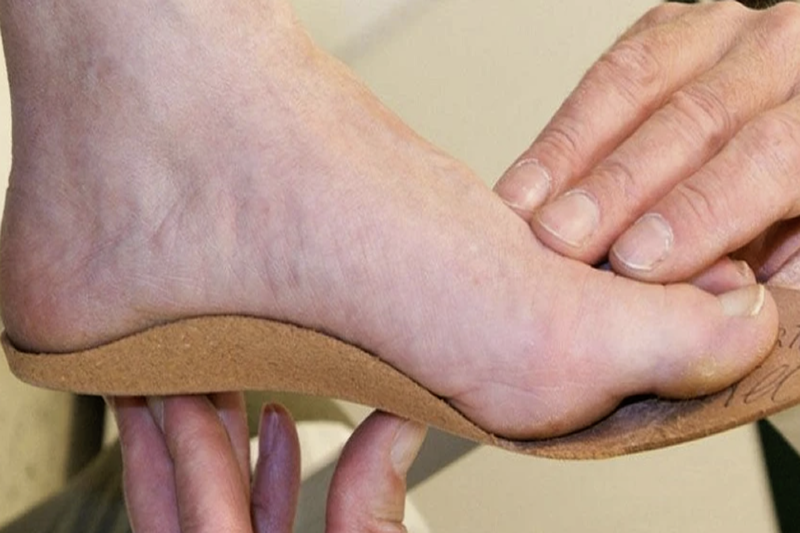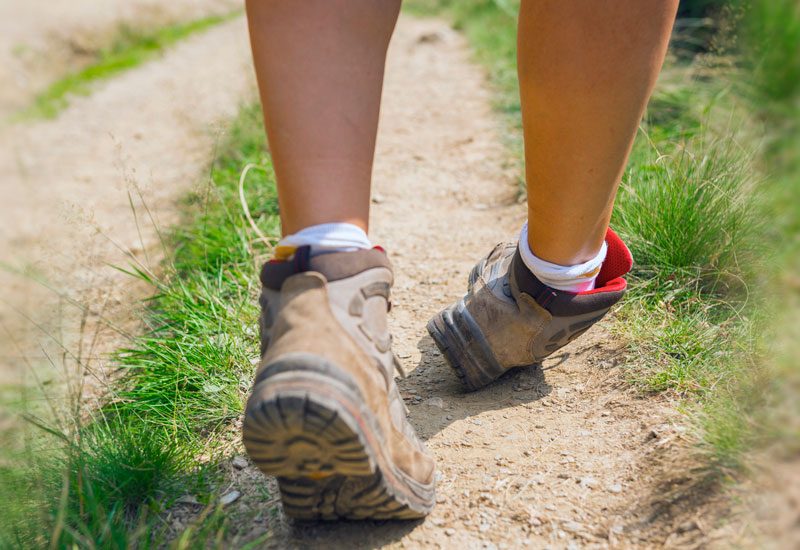
Do I Need Foot Orthotics?
Orthotics, also known as orthoses, are shoe inserts that alter the position of your feet, realigning them with your ankles and legs.
Orthotics are special shoe or heel inserts a doctor prescribes that are custom-made specifically for you.
A doctor may prescribe orthotics to treat foot, leg, or back problems. Read on to discover the conditions orthotics can treat and how effective they can be.
At Dr. Babajida Ogunllana, we offer several forms of orthotic therapy including:
- SUPERfeet Premium Insoles
- Orthema CAD/CAM custom made orthotics
- The Richie Brace
How to tell if you need orthotics
Orthotics can be part of a comprehensive treatment plan to address various symptoms, usually having to do with pain and discomfort of the feet and legs. Some of the goals a doctor may have for orthotic treatment include:
- correcting foot deformities
- helping the foot or ankle function better
- providing support to the ankle
- reducing the risks for further injuries
Orthotics are more than just a heel pad or shoe insert you can buy at most athletic stores. They’re highly customized shoe or heel inserts made for your feet. Your doctor will only recommend an orthotic if an off-the-shelf device or other treatments, such as exercises at home, haven’t proven effective.
How a podiatrist diagnoses problems
You may see a podiatrist, a doctor who specialises in conditions of the feet, if you’re experiencing significant foot and heel pain. They’ll first ask about your symptoms. Questions may include when you first noticed the symptoms, what makes them worse, and what makes them better.
Your podiatrist will then conduct a physical exam of your feet. They’ll look for deformities and areas that are especially painful.
The doctor will likely ask you to walk and perform other activities to determine how the feet and ankles are positioned during certain exercises. Some doctors may even have special imaging or pads where you walk. These images will show how and where your feet strike the ground and can help determine the exact location and type of problems in the structure and function of your feet.
They may also recommend traditional imaging of your feet, such as X-ray, bone scan, or MRI. This can help them identify areas of arthritis, damage, or injury.
A doctor will take all of these diagnostic methods into account when making treatment recommendations, including to potentially prescribe orthotics.
What conditions are orthotics used to treat?
Doctors may prescribe orthotics to treat a number of medical conditions. Examples include:
- Arthritis. Rheumatoid arthritis and osteoarthritis can cause discomfort in the feet and poor positioning that orthotics may help to correct.
- Back pain. Sometimes poor positioning of the feet, such as arches that roll inward, or lack of cushioning can cause pain that orthotics can lessen.
- Bunions. Bunions are painful bumps that can develop at the base of the big toe and cause foot deformities. Orthotics with a wide toe box can help to reduce pressure on the big toe.
- Bursitis. Inflammation of fluid-filled sacs in the heels and toes can cause bursitis pain and discomfort. Orthotics with heel and arch support can help to reduce bursitis discomfort.
- Diabetes. Sometimes, a person with diabetes can lose sensation in their feet, a condition known as diabetic neuropathy. When this occurs, orthotics can help to reduce excess stress and pressure that can lead to foot ulcers.
- Flat feet. Flat feet can cause foot, ankle, and back pain. Orthotics can help to support the feet and promote proper foot positioning.
- Hammer toes. Hammer toes often occur as a side effect of bunions on the big toe. They cause second-toe pain and deformities on the ball of the foot. Orthotics can provide additional support to the feet and reduce the likelihood that hammer toes will worsen.
- Heel spurs. Heel spurs are conditions where excess bone grows on the back or bottom of the heel. Orthotics can support the foot and reduce inflammation.
- High arches. Very high arches can stress muscles in the feet and lead to a number of conditions, such as shin splints, knee pain, and plantar fasciitis. Orthotics can help prevent a person’s feet from rolling excessively inward or outward.
- Injuries. People who’ve experienced trauma to their feet and ankles may require extra support during the healing process with orthotics.
- Plantar fasciitis. Plantar fasciitis is a common cause of heel pain. Doctors may sometimes recommend orthotics to support the heel and foot.
Doctors may also prescribe custom orthotics for people who have positional concerns with their feet or legs. This can include those with underdeveloped leg and foot muscles.
How can orthotics help?
Orthotics are often one part of a treatment regimen for many foot and ankle concerns. For example, a doctor may prescribe orthotics in conjunction with treatments such as more supportive shoes as well as physical therapy exercises.
A doctor may also recommend taking nonsteroidal anti-inflammatory drugs (NSAIDs), such as ibuprofen and naproxen sodium, to reduce pain and inflammation.
Doctors often recommend orthotics in conjunction with these treatments because orthotics can correct feet that aren’t ideally positioned. For example, when feet overpronate, they roll slightly inward or downward. This is usually the case for those with very flat feet. Wearing orthotics can help provide additional arch support to try and prevent this.
Orthotics may also provide additional support and cushioning in key areas of the feet, such as the heel or ball of the foot. Because orthotics are custom-made, the person making them will consider the individual’s footwear needs.
Ideally, orthotics and other treatments can help a person avoid more invasive treatments, such as surgery.
Types of orthotics for feet
Orthotics can be customized in a variety of materials. A doctor will write a prescription for an orthotic material based on what condition and symptoms a person has.
The orthotic types can range in materials from rigid — usually made from materials such as carbon fiber or plastic — to accommodative, which is very flexible and cushioning.
Some orthotics are full-shoe inserts similar to the insoles present in many athletic shoes. Others are a smaller heel insert that fits into the back cup of the shoe.
Ankle-foot orthotics are another option that has not only a shoe insert, but also an upright portion that extends from the heel upward and around the calf.
Doctors may recommend using orthotics in conjunction with braces, other shoe inserts, or taping, such as kinesiology taping.
Orthotics don’t universally help all people with conditions that affect the foot and ankle. There are many complex considerations surrounding the effectiveness of orthotics, including:
- the training and experience of the person making the orthotic
- the doctor’s prescription
- the shoe in which a person wears them
- how often a person wears them
There are studies that support the use of orthotics for treating foot and ankle problems. However, many of them stress that the orthotic must be well-fitting and worn correctly.
Orthotics can be a part of a comprehensive treatment plan to help those who have foot and ankle concerns. They aren’t for everyone, and may create an expense for those without insurance coverage.
If your doctor recommends an orthotic or orthotics, it’s best to ask questions about what kind of results you can expect from routine wear.



